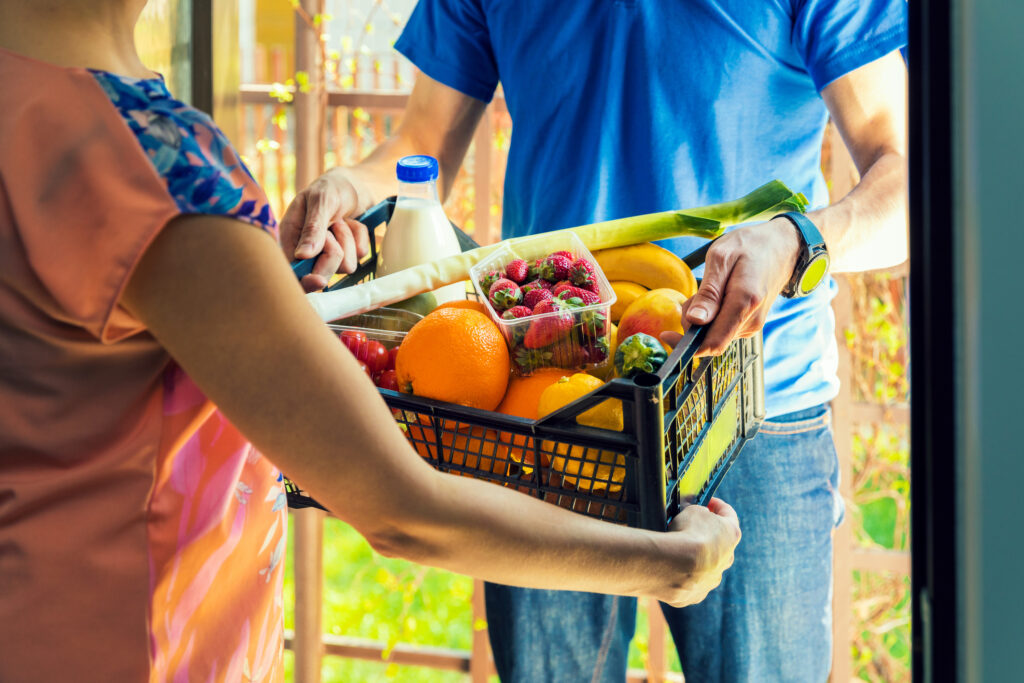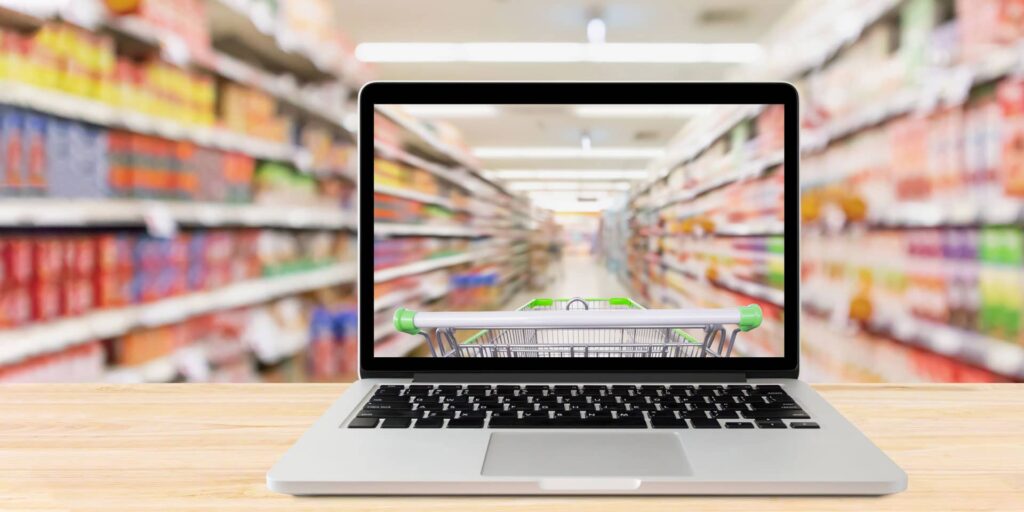CORESIGHT RESEARCH REPORT FINDS A DIP IN ONLINE GROCERY SHOPPING
A new study from Coresight Research has shown that the surge in online food shopping sparked by the Covid-19 pandemic may, at least in part, have gone into reverse.
A report from the company indicates that the proportion of American consumers buying groceries online has fallen slightly.
The US Online Grocery Survey 2022: Assessing Trends in Shopper Behaviour, Quick Commerce, and Meal Kits, found that, over the past year, just over 54% of US shoppers bought groceries online.
That is 4.7 percentage points down on the same figure a year earlier, according to the report.
The report also showed a decline in the proportion of online shoppers who have their groceries delivered, as opposed to collecting them from the store after purchasing on the internet.
In total, 48.2% of grocery shoppers now collect their orders, which is 5.2 percentage points up on the figure of a year ago.
The company said the findings reversed the trend of the past several years, in which an ever-increasing proportion of online grocery shoppers had their produce delivered.
A number of factors may have caused people to become more willing to pick up their groceries after ordering them online, according to the firm.

“We have seen a widescale adoption of grocery pickup services by retailers and consumers trying to circumvent transportation delays and higher delivery fees and surcharges,” Coresight Research said.
Despite evidence of a drop off in online grocery shopping and delivery, Coresight Research said positive trends were still evident.
“Although the proportion of shoppers who shopped online in the last 12 months declined compared to 2021, we saw a slight increase in the size of the subset doing ‘most’ or ‘all or ‘almost all’ of their grocery shopping online,” the company said in a statement.
This proportion was, the company said, up 3.6 percentage points, reaching 28.3%. This indicates, Coresight Research said, that the online channel “now captures a meaningful share of full-basket grocery shoppers”.
Therefore, the latest figures may not necessarily represent a change in the long-term trend away from buying in stores and towards purchasing groceries online for delivery.
After the novel coronavirus emerged and nations introduced lockdowns, online grocery shopping – which was already enjoying an upward trend thanks to the greater use of technology by consumers – surged even faster.
The increases seen in the US were mirrored in many other countries, with governments often encouraging the public to shop online where possible to prevent the disease from spreading person-to-person in supermarkets and other food stores.

However, with lockdown measures typically much less stringent now, the reluctance of some shoppers to purchase groceries in-person has lessened, at least for now.
Another finding of the Coresight Research report is that Amazon Prime has seen a slight reduction – of 1.6 percentage points – in the proportion of members making online grocery purchases.
Indeed, US media have reported on an apparent slowdown in growth in online sales at Amazon more widely, with one platform reporting that the business had stalled “after decades of growth”.
While Coresight Research’s report offers signs of a slight dip in interest in online grocery shopping, the overall trend appears to be upward.
As reported by SIAL Paris Newsroom, there continues to be huge interest among investors in ploughing funds into online groceries.
One recent example was the way in which Jokr, a delivery start-up, attracted $260 million (€247.66 million) in investment in a recent funding round.
With its value now exceeding $1 billion (€1.14 billion), Jokr has become a unicorn, with investors deciding that its promise of delivery within 15 minutes is likely to result in significant increases in sales.
Join us at SIAL Paris as exhibitor Join us at SIAL Paris as visitor
